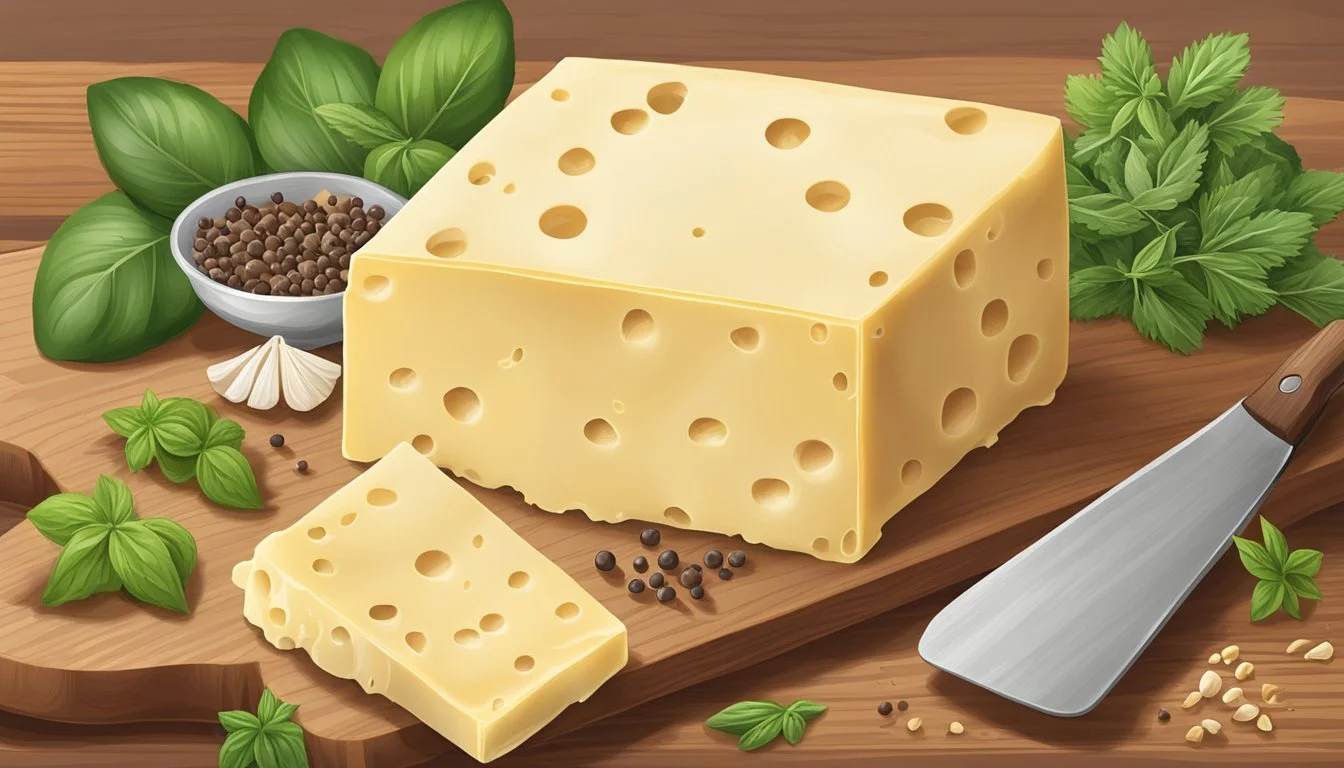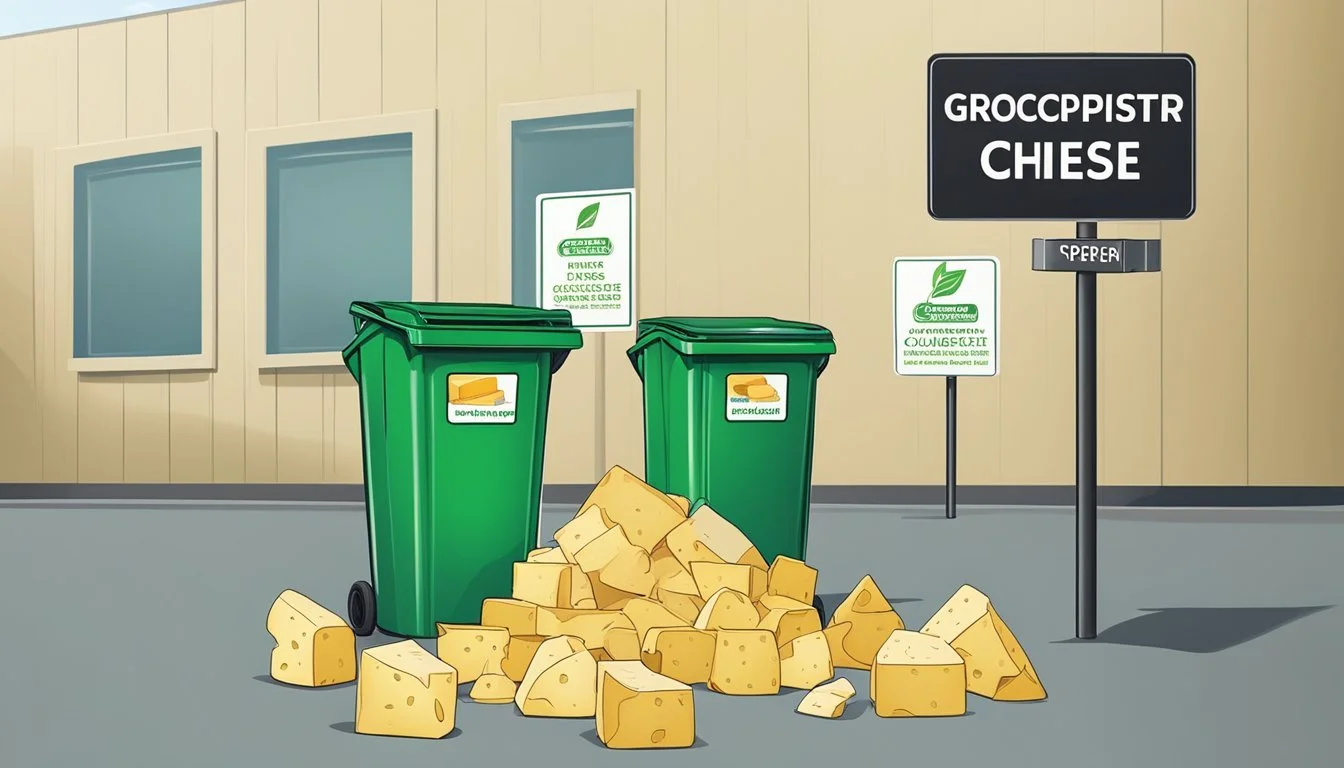How Long Does Gruyère Cheese Last?
Shelf Life and Preservation Tips
Gruyère is a classic Swiss cheese (how long does cheese last?) well-known for its rich, creamy flavor and smooth melting qualities. Its longevity once purchased depends on various factors including whether it's been opened and how it's stored. Unopened Gruyère, kept refrigerated at a constant temperature between 35 to 45 degrees Fahrenheit, can last about 3 to 4 months, which makes it a durable addition to any cheese (What wine goes well with cheese?) board or recipe.
Once opened, it's important to consume Gruyère cheese within a shorter timeframe to enjoy its best quality. Generally, an opened chunk of Gruyère will maintain its flavor and texture for 1 to 2 weeks when wrapped correctly and stored in the refrigerator. The longevity of Gruyère can also be influenced by the packaging it's kept in; tight wrapping in materials like wax paper, aluminum foil, or plastic wrap can help extend its shelf life.
Proper storage and handling are essential to prevent spoilage and maintain the integrity of the cheese's flavor. Recognizing that all cheese can go bad if not stored correctly, special attention should be given to refrigeration and packaging of Gruyère to ensure it remains a delicious and safe part of a variety of dishes.
Understanding Gruyère Cheese
Gruyère cheese, known for its complexity in flavor and texture, stands as a prime example of traditional Swiss cheese-making. It is recognized for its distinctive taste which evolves as it ages.
Origin and Classification
Gruyère cheese originated in Switzerland, in the canton of Fribourg, with the town of Gruyères lending the cheese its name. It enjoys a protected status as a Swiss AOP (Appellation d'Origine Protégée), ensuring that only cheese from this region can bear the name "Gruyère." Historically, Gruyère has been a fundamental part of Swiss culinary tradition, and its techniques have been honed over centuries.
Characteristics of Gruyère Cheese
The characteristics of Gruyère cheese are deeply rooted in its crafting process and the region's terroir. Flavor: Described as complex, it balances a sweet essence at its core with the presence of a nutty flavor that becomes more pronounced as it ages. Texture: Initially, the cheese presents a creamy texture that can grow slightly grainy with age. Optimal experience of the cheese's quality is achieved when it is fully aged and all subtle flavors are enhanced.
Storing Gruyère Cheese
Proper storage maximizes Gruyère cheese's freshness and shelf life while maintaining its quality. Essential aspects include temperature control, moisture management, and protection from air exposure.
Optimal Storage Conditions
Gruyère cheese requires consistent conditions where the temperature and humidity levels are controlled. The recommended temperature range for storage is between 34°F and 38°F (1°C and 3°C) with relative humidity around 85% to prevent the cheese from drying out or becoming too moist, which can encourage mold growth.
Refrigeration and Freezing
For refrigeration, Gruyère should be kept in the least fluctuating temperature section of the refrigerator. If not planning to consume promptly, freezing Gruyère is an option to consider; it can be stored in the freezer for up to 3 months. However, while freezing can preserve the cheese, it may alter its texture.
Packaging Methods
When packaging Gruyère cheese, it's important to minimize air exposure to prevent molding. For feeder bags that remain unopened, their original packaging suffices. Once opened, re-wrap Gruyère using:
Parchment or wax paper
Overwrap with plastic wrap or aluminum foil
For best results, place it in an airtight container
These methods help preserve the cheese's integrity by balancing moisture content and reducing air contact.
Shelf Life and Preservation
Proper preservation can significantly impact the shelf life of Gruyère cheese, ensuring it maintains its quality and safety for consumption. This section will discuss how long Gruyère cheese typically lasts, signs to watch for spoilage, and methods to extend its shelf life.
Estimated Shelf Life
Unopened Gruyère: Typically lasts for approximately 3 to 4 months when stored properly in the refrigerator.
Opened Gruyère: Once opened, it should be consumed within 1 to 2 weeks for best quality, though it can last up to 3 to 4 weeks if properly wrapped and stored in the refrigerator.
Signs of Spoilage
Gruyère cheese, when starting to spoil, may exhibit the following signs:
Mold Growth: Any visible mold on the surface, not typical for the cheese, should be considered a spoilage indicator, even though some mold can be cut away in hard cheeses.
Odor Changes: A sour or ammonia-like smell can indicate spoilage.
Texture Changes: If the cheese feels excessively hard, slimy, or has a gritty texture, it may have gone bad.
Taste Alteration: A sour or strange taste is a clear sign that the Gruyère is no longer fresh.
Extending Shelf Life
To maximize the preservation of Gruyère cheese:
Wrap Carefully: After opening, wrap the cheese first in wax or parchment paper, then in plastic wrap or aluminum foil to protect it from air exposure.
Temperature: Store the cheese at a consistent temperature between 34°F (1°C) and 39°F (4°C), avoiding the door or top shelf of the refrigerator due to temperature fluctuations.
Container: Use an airtight container or the original packaging, if possible, for additional protection against contaminants.
Gruyère Cheese in Cuisine
Gruyère cheese is a versatile ingredient known for its melting properties, making it ideal for various recipes ranging from sandwiches to sauces. Its application in cuisine spans traditional and modern dishes alike.
Culinary Uses
Gruyère cheese takes a front seat in a multitude of recipes due to its smooth melting quality and rich flavor. It is an essential ingredient in a classic fondue recipe, where it often blends with other cheeses to create a velvety dip perfect for bread and vegetables. Another iconic dish is the French onion soup, wherein a hearty slice of Gruyère becomes a deliciously bubbly and browned topping.
In casseroles, Gruyère adds a creamy dimension, particularly to the comfort food favorite, mac and cheese. Its firm texture and nutty taste enhance the layers in a quiche, and when melted atop a croque monsieur, it contributes to a gourmet version of the toasted sandwich. Whether it is used in grilled cheese sandwiches or sauces, Gruyère’s presence transforms the ordinary into the extraordinary.
Pairing Suggestions
When it comes to pairings, Gruyère is as friendly with wines and breads as it is in grilled cheese sandwiches. A traditional Swiss fondue is best accompanied by a crisp white wine such as a Swiss Fendant or a dry Chardonnay. These wines cut through the richness and complement the cheese's complexity.
For those looking to enjoy Gruyère in a sandwich or as part of a charcuterie (What wine goes well with charcuterie?) board, consider including an assortment of bread from baguettes to rye, balancing out textures and flavors. Gruyère also pairs exceptionally well with cured meats (What wine goes well with cured meats?) and sweet elements like fruit chutneys or honey, offering a satisfying mix of savory and sweet experiences.
Safety and Health Considerations
When consuming Gruyère cheese, an individual should consider both the safe handling of this perishable food to prevent food poisoning, and the nutritional benefits and limitations it presents.
Safe Consumption Guidelines
To minimize the risk of bacteria growth and food poisoning, Gruyère cheese should be stored properly. It is essential to keep it refrigerated at 35 to 45 degrees Fahrenheit, and it is best consumed before the date indicated on its packaging if it remains unopened. For opened Gruyère cheese, storage in an airtight container is advised to limit exposure to air and potential contaminants.
Guidelines for safe consumption include:
Refrigerate immediately after purchase.
Store in original packaging or an airtight container.
Consume by the 'use by' date, or within 3-4 months when unopened.
Nutritional Information
Gruyère cheese is a protein-rich food, which also contains notable amounts of fat, calcium, iron, vitamin A, and B12.
Nutritional facts per ounce (28g):
Protein: Approximately 8g
Fat: Around 9g
Calcium: Contributes significantly to daily intake
Sodium: 202mg, nearly 10% of the daily value
Vitamin B12, Phosphorus, & Zinc: Over 10% of the daily value
An ounce of Gruyère also provides vital nutrients such as vitamin A and selenium. Its sodium content, however, suggests that individuals should consider their intake in the context of their overall diet to ensure it is safe to eat, especially for those monitoring their sodium consumption.
Creative Uses and Ideas
When one has a quality ingredient like Gruyère cheese, its versatility in the kitchen becomes quite evident. It can elevate simple dishes or become the star in a more complex creation.
Serving Suggestions
For those looking to indulge in the robust flavor of Gruyère cheese, serving it on a cheese board is a quintessential choice. Gruyère's firm texture allows it to be sliced neatly, pairing well with a variety of fruits such as pears, or a selection of nuts. To complement its rich taste, serving the cheese alongside a glass of wine is highly recommended, with bold reds or a crisp white to balance the cheese's nuttiness.
Cheese Board:
Sliced Gruyère
Pears and assorted fruits
Mixed nuts
Choice of wine: bold reds or crisp whites
Innovative Recipes
In the realm of cooking, Gruyère demonstrates its flexibility. It melts beautifully, making it a prime candidate for gratins or a bubbly topping for French onion soup. The cheese can also be shredded into a creamy béchamel sauce for a sophisticated mac and cheese. Moreover, Gruyère's savory notes are a perfect match for cured meats and bread, suggesting its inclusion in sandwiches or as a staple in snacking platters.
Gratins:
Potatoes au Gratin with shredded Gruyère
Snacking:
Cured meats with sliced Gruyère
Gruyère and bread, ideal for toasted sandwiches
Comparing Gruyère Cheese
When examining the preservation and characteristics of Gruyère cheese, it is beneficial to compare it with other cheeses to understand its unique qualities and storage life.
Gruyère vs Other Cheeses
Gruyère cheese stands out from other cheeses like Swiss cheese, Cheddar, and Brie due to its firm texture and strong flavor. Unlike crumbly cheeses such as Feta, Gruyère is dense and compact, which contributes to its relatively long shelf life when stored properly. Compared to Swiss cheese, which is known for its holes and milder taste, Gruyère is smooth with a few small holes and a more pronounced flavor profile.
Cheddar and Gruyère are both firm, but Gruyère has a creamier texture and a nuttier taste. It is not as hard as Parmesan, which can last much longer due to its lower moisture content. Storage requirements for Gruyère align more closely with those for semi-hard cheeses like Gouda. Both require refrigeration and proper wrapping to prevent spoilage and maintain their quality.
The rind of Gruyère cheese, which is generally brownish and hard, distinguishes it from softer rind cheeses like Brie. Traditionally, Gruyère's rind is not eaten. It is naturally a bit salty, and it does not typically become overly salty as it ages, unlike Parmesan, which intensifies in saltiness over time.
The color of Gruyère, a pale yellow, indicates a proper aging process. It does not possess the orange hue of aged Cheddar nor the stark white of Feta. When assessing if Gruyère has spoiled, one should look for changes in color, the presence of mold, or an off smell, all strong indicators that the cheese should no longer be consumed.
Selecting Quality Gruyère
Selecting high-quality Gruyère involves looking for a few key characteristics. The cheese should have a consistent, pale yellow color and a firm yet slightly elastic texture. The presence of small holes, or "eyes," is acceptable, but they should be sparse and not as pronounced as those found in Swiss cheese.
The rind should be intact and relatively hard, as this helps protect the cheese during storage and maintain its flavor and texture. It's essential to inspect the rind for any cracks or unusual dryness, which could affect the longevity and taste of the cheese inside. When considering freshness, selecting a piece that is closer to the original wheel and has been recently cut is advantageous, as pre-packaged slices or chunks might have been exposed to air for longer periods, shortening their usable shelf life.
Consumers should also note that true Gruyère cheese comes from the Gruyère district of Switzerland and bears the hallmark of authenticity. Cheeses labeled as Gruyère-style may not meet the same standards and could have different shelf lives and flavor profiles.
Proper Disposal and Recycling
When disposing of Gruyère cheese or its packaging, it's critical to consider environmental friendliness and the recyclability of materials such as plastic wrap, parchment paper, aluminum foil, or freezer bags.
Eco-Friendly Disposal Methods
When one discards Gruyère cheese that has gone bad, it should be done responsibly. If the cheese is no longer edible, it can be composted as it is an organic material. Composting turns the cheese into beneficial soil amendment, diverting waste from landfills and reducing greenhouse gas emissions. It's essential to remove any non-compostable materials like plastic wrap or aluminum foil which should be discarded separately.
Recycling Packaging
Packaging from Gruyère cheese, like many food products, often includes materials like plastic wrap, parchment paper, and aluminum foil. Consumers should be aware of their local recycling guidelines as these materials can sometimes be recycled:
Plastic Wrap: Not commonly recyclable through curbside programs, but some grocery stores have drop-off locations for plastic film recycling.
Parchment Paper: Typically not recyclable due to its silicone coating, but it can be composted if it is unbleached and free from food residue.
Aluminum Foil: Recyclable if cleaned and balled up to a size that is typically specified by local recycling programs.
When storing cheese in the freezer, people often use freezer bags. These bags are generally not accepted in curbside recycling, but they can be reused multiple times to minimize waste before being discarded.







